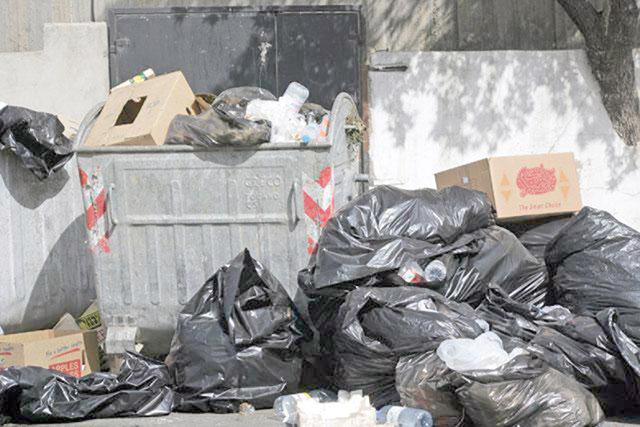You are here
Electricity generation project inaugurated at Ghabawi landfill
By JT - Jul 02,2019 - Last updated at Jul 02,2019

Amman Mayor Yousef Shawarbeh during an inauguration ceremony at Ghabawi landfill on Monday (Petra photo)
AMMAN — The Greater Amman Municipality (GAM) on Monday launched a bio-gas electricity-generating project at the Ghabawi landfill in celebration of the 20th anniversary of His Majesty King Abdullah’s Accession to the Throne.
Amman Mayor Yousef Shawarbeh, during the opening ceremony, said that the megaproject will alleviate the GAM's financial burdens by cutting the municipality's electricity bill by JD5 million a year.
The waste-to-energy project, once connected with the Jordan Electricity Company's grid, will generate 4.8 megawatts per hour by burning methane collected from waste at the Ghabawi landfill, Shawarbeh said, highlighting the GAM’s intent to further expand the project to fully cover the municipality's energy consumption.
The project at Ghabawi landfill, situated some 25km east of Amman, will also serve the environment by collecting methane, thus preventing it from being released into the
air as pollution.
European Bank for Reconstruction and Development (EBRD) Regional Director for the Eastern and Mediterranean Region Heike Harmgart expressed the EBRD's pride in supporting the project, adding that it will improve the environmental situation in the city and optimise waste treatment.
The project was established in 2003 at a cost of JD21 million, and is slated to be complete by 2027. An average of 4,300 tonnes of waste flows into Ghabawi
landfill daily.
The GAM has said that the generated electricity from the project will be used to power the landfill, while the remainder will be sent to the national grid. It is expected to remain in operation beyond 2030, the Jordan News Agency, Petra reported.
Methane gas produced at landfills is a strong contributor to global climate change, according to the GAM, which indicated that it has 21 times the negative impact of CO2 on the atmosphere.
Related Articles
AMMAN — Growing industrialisation, high population growth and immigration rate have led to a rapid increase in solid waste generation in Jor
AMMAN — Ghabawi landfill project has been generating electricity since the end of May by converting waste into bio-gas, according to an offi
AMMAN — The Greater Amman Municipality (GAM) said on Saturday that the Ghabawi landfill will start generating 5 megawatts per hour (MWh) as

















